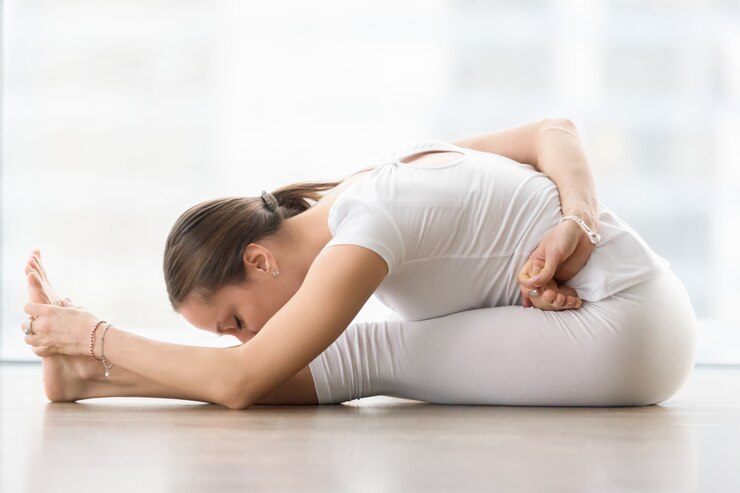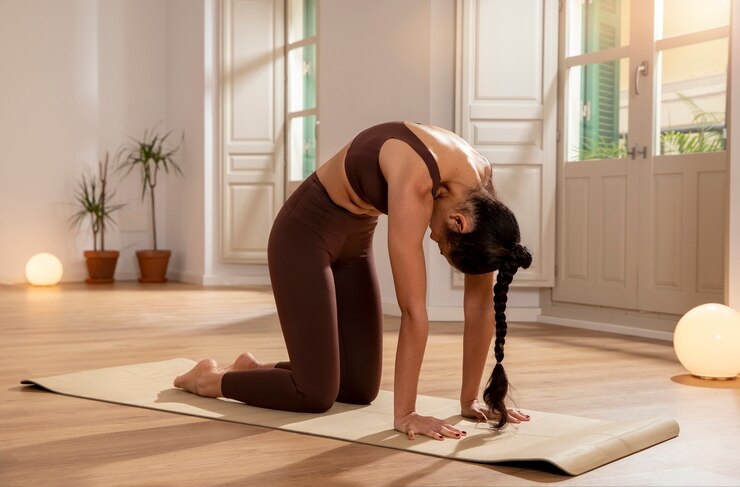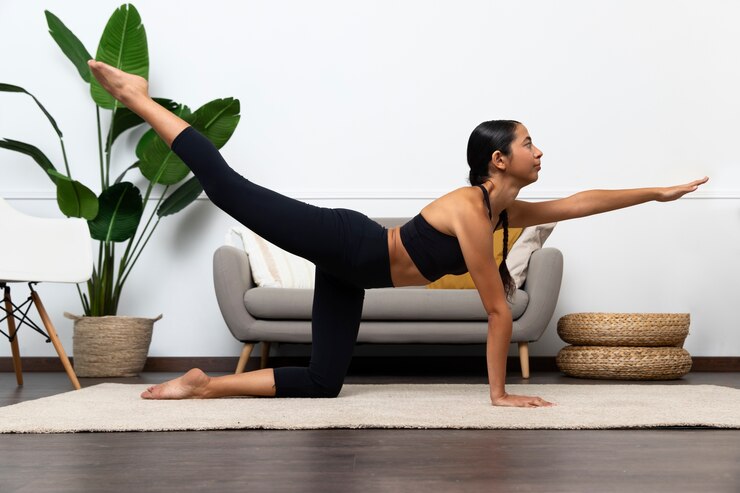50 Hrs – Beginner’s Yoga Teacher Training Certificate Course, Bangalore, India.
- Contact Hours: 30 Hours
- Non-Contact Hours 20 Hours
- Course: 50 Hrs – 50 Hrs – Yoga for Beginners Certificate Course
- Total Fee for the Training(For Indian Citizens Only): INR 05,000(Registration Fee) + INR 35,000 (Course Fee) = INR 40,000
- Total Fee for the Training(For Non-Indian Citizens Only): USD 200(Registration Fee) + USD 400 (Course Fee) = USD 600
- Accreditation: Yoga Alliance USA YACEP.
- Skill level: Beginners to Intermediate
- Self-Paced/ Flexible Duration: Online or Regular Mode.
- Language: English
- Learning Mode:Offline/Online/Hybrid/Self-Pace/Flexible Duration.
- About the course facilitator: Dr. S. Karuna Murthy, M.Sc., Ph.D., E-RYT 500, YACEP
- Language:Our courses will be held in English Medium.
- Course Dates:Please Contact Us (karunaayoga@gmail.com or +91 9686549129)
- What Will You Get: Yoga Manual (01), Certificate, Course Training, Excluded with accommodation and food.
Yoga Continuing Education Courses (YACEP)
We offer various training programs to deepen knowledge and improve teaching skills through various yoga teacher training courses.
Yoga Alliance Registered Continuing Education Provider, Courses Open to Everyone.
This course is eligible for Continued Education (CE) credits with Yoga Alliance. It is accredited by Yoga Alliance and it can be used as a continuing education course (YACEP) for Register Yoga Teachers with Yoga Alliance
Deepen your practice and your knowledge
Are you are a yoga professional or a curious practitioner and wish to deepen your yoga knowledge and techniques? Then a continuing education course may be something for you! You will learn selected specialized yoga topics that will allow you to expand your horizons when it comes to your personal practice or that of your students. With the knowledge you will acquire, you will gain a deeper understanding of the functioning of anatomical and energetic body layers, and develop a more complete insight into yoga.
International Certification
Upon successful completion of the course, you will receive a certificate of completion of the 20 hour Hatha Yoga course, that you can count towards your continuing education. Our yoga teacher training courses are accredited by Yoga Alliance USA.
Pre-requisites:
- This course is open to all students who wish to deepen their knowledge and application of some of the highest teachings of
- Participants do not need to be yoga
- Mastery of any yoga practice is not
- Only your sincere desire for knowledge and your commitment to personal
- Love for Yoga is the most important eligibility factor for learning this course.
- Students who want to know Yoga in totality and move beyond Asana and Pranayama, Mudra & Bandha.
What you’ll learn
- You will learn beginners level asana, forward, backward, arm balance, hip opening and inverted poses.
- You will know how-to Integrate asana, pranayama mudra sutra into your yoga practice.
- You will learn the methods given by Swatmarama to mastery your mind through hatha yoga.
- Practice asana, pranayama and Savasana daily
- Improve your practice of advanced asanas daily
- Get more insights into the core principles of yogic philosophy
- Deepen your understanding and application of mudras and bandhas

What do I need for the online course?
- Yoga mat
- Computer / Smartphone with camera
- Internet connection
- Yoga Blocks
- Pillow or Bolster or Cushion
- Strap
- Notebook and Pen
- Zoom
Assessment and Certification
The students are continuously assessed throughout the course at all levels. There will be a written exam at the end of the course to evaluate the understanding of the philosophy of Yoga and the skills of the students. Participants should pass all different aspects of the course to be eligible for the course diploma.
Recommended Texts
- Asana Pranayama Mudra Bandha by Swami Niranjananda Saraswati
K.S. Iyengar, Light On Yoga.
50 Hrs – Yogafor Beginners Cetificate Course
Training and Practice
- Yoga Mantra Chanting
- Gayathri Mantra
- Maha Mrityunjaya Mantra
- Saha nāv avatu
- Sarve bhavantu sukhinaḥ
- Surya Namaskara (sun salutation)
- i) Introduction
- ii) Preparation
iii) General contra-indications
- iv) General benefits
- v) Time of practice
- vi) Awareness
vii) Conclusion
viii) Duration
- ix) Beeja mantras
2.1. Sivananda – Surya Namaskar (sun salutation)
- Asanas
3.1. Standing Asana Beginners Level
- Samasthiti(upright or still)
- Tadasana – (mountain pose)
- Vrksasana (tree pose)
- Ardha Uttanasana(standing half forward bend)
- Padahastasana (hand to foot pose)
- Ardha Chakrasana (half wheel pose)
Intermediate Level
- Garudasana (eagle pose)
- Utkatasana (mighty pose)
- Utthita Trikonasana (extended triangle pose)
- Parivritta Trikonasana (revolved triangle pose)
- Utthita Parsvakonasana (extended side angle pose)
- Parivritta Utthita Parsvakonasana (revolved extended side angle pose)
- Parsvottanasana(side intense stretch)
- Virabhadrasana -1 (warrior -1)
- Virabhadrasana -2(warrior-2)

Advanced Level
- Ardha Chandrasana (half moon pose)
- Virabhadrasana -3(warrior-3)
- Natarajasana(Lord of the dance Pose)
- Prasarita Padottanasana(legs widespread intense stretch)
- Utthita Hasta Padangusthasana(intense arms hold big toe)
- Malasana (garland pose)
3.2. Kneeling Asana Beginners Level
- Vajrasana (diamond pose)
- Balasana(Child’s Pose) or Shashankasana ( moon or hare pose)
- Madukasana(Frog Pose) or Bhadrasana (gracious pose)
- Marjaryasana(Cat Pose)
- Vyaghrasana(Tiger Pose)
Intermediate Level
- Virasana (hero pose)
- Ustrasana(camel pose)
Advanced Level
- Supta Virasana (recline hero pose)
3.3. Sitting Asana Beginners Level
- Sukhasana(Easy pose)
- Dandasana (Staff Pose)
- Siddhasana(adept pose)
- Padmasana(lotus pose)
Intermediate Level
- Janu Sirsasana (Head to Knee Pose)
- Parivrtta Janu Sirsasana(revolved knee to head pose)
- Paschimottanasana(ugrasana or brahmacharyasana)
- Purvauttansana(east intense stretch pose)
- Gomukhasana(cow face resembling)
- Marichyasana(name of the sage mariachi)
- Ardha Navasana (half boat)
- Upavistha Konasana(wide angle seated forward bend pose)
- Baddha Konasana(bounded angle pose)
- Ardha Matsyendrasana (half spinal twist)
- Yogamudrasana(yoga gesture or psychic union pose)
Advanced Level
- Ardha Padma Paschimottanasana(half lotus west intense stretch pose)
- Ardha Baddha Padma Paschimottanasana(half bounded lotus west intense stretch pose)
- Bharadvajasana(Bharadvaja was the father of drona)
- Hanumanasana(front full split or hindu monkey god)
- Eka Pada Raja kapotasana(single leg king pigeon pose)
3.4. Supine Asana (on back) Beginners Level
- Shavasana(corpse pose)
- Supta Pawanmuktasana (wind relieving pose)
- Setu Bandha Sarvangasana(bridge lock Sarvangasana)
Intermediate Level
- Jathara Parivartanasana(abdomen twisting pose)
- Salamba Sarvangasana(supported Sarvangasana)
- Matsyasana(fish pose)
- Supta Konasana(reclining angle pose)
- Urdhva Cakrasana(upward wheel pose)
Advanced Level
- Niralamba Sarvangasana (without support Sarvangasana)
- Supta Padangusthasana(supine holding big toe)
- Halasana(Plough Pose)
- Eka Pada Urdhva Dhanurasana(single leg upward bow pose)
- 5. Prone Asana (abdomen) Beginners Level
- Makarasana (crocodile pose)
- Ardha Shalabhasana(half locust pose)
- Salabhasana (locust Pose)
- Sarpasana(snake pose)
- Bhujangasana(serpent pose)
- Ardha Dhanurasana (half bow)
Intermediate Level
- Dhanurasana(bow pose)
- Urdhva Mukha Svanasana(upward facing dog pose)
Advanced Level
- Parsva Dhanurasana(sideways bow pose)
- 6. Arm Balancing and Head Standing Asana Intermediate Level
- Phalakasana(plank pose) or Santolanasana (balancing pose)
- Chaturanga Dandasana(four limbed staff pose)
- Tolasana(scale pose)
- Purvottanasana(east intense stretch)
Advanced Level
- Mayurasana (mayura means a peacock)
- Salamba Sirsasana
- Pranayama
4.1. Introduction
4.2. Four aspects of pranayama
4.3. The Pranic body
4.4. Breath, health and pranayama
4.5. Breathing and life span
4.6. General notes for the practitioner
- i) Contra-indications
- ii) Time of practice
iii) Bathing
- iv) Clothes
- v) Empty stomach
- vi) Diet
vii) Place of practice
viii) Breathing
- ix) Sequence
- x) Sitting position
- xi) Avoid strain
xii) Side effects
4.7. Natural breathing
4.8. Abdominal Breathing
4.9. Thoracic Breathing
4.10. Clavicular Breathing
4.11. Full Yogic Breathing
4.12. Kapalbhati Pranayama (frontal brain cleansing breath)
4.13. Bhastrika Pranayama (bellows breath)
4.14. Nadi Shodhana Pranayama (psychic network purification)
- 15. Ujjayi Pranayama (the psychic breath)
4.16. Sheetali Pranayama(cooling pranayama)
4.17. Sheetkari Pranayama (hissing breath)
4.18. Bhramari Pranayama (humming bee breath)
- Mudra
5.1. Introduction
5.2. Mudras and prana
5.3. A scientific look at mudras
5.4. Mudras
- Jnana mudra
- Chin mudra
- Bhairava mudra
- Hridaya mudra.
- Shambhavi mudra
- Nasikagra drishti
- Shanmukhi mudra
- Yoga mudra
- Bandhas (neuro-muscular locks)
6.1. Introduction to Bandha
6.2. Granthis
6.3. Bandha (lock)
- Jalandhara Bandha (throat lock)
- Moola Bandha (perineum contraction)
- Uddiyana Bandha (abdominal contraction)
- Maha Bandha (the great lock)
- Yoga Nidra
- Introduction
- Yoga Nidra steps
- Preparation/Introduction
- Relaxation
- Sankalpa/Resolve
- Rotation of Consciousness
- Breathe Awareness
- Feeling of Sensations
- Image visualization
- Sankalpa/Resolve
- Finish
- Dhyana (Meditation)
8.1. Meditation on Breath (Anapana)
8.1.1. Part 1: Observation of the natural breath
8.1.2. Part 2: Observation of the sensations
8.1.3. Observe without reacting and keep the equanimity
8.3. 6. Meditation Room
8.3.7. Brahmamuhurta
8.3.8. Asana
8.3.9. Direction
8.3.10. Where to Concentrate
8.3.11. Fixed Hours
8.3.12. Definite Place
8.3.13. A Steady Pose
8.3.14. Face the North or East
8.3.15. A Seat
8.3.16. Repeat Elevated Prayer
8.3.17. Clear Articulation
8.3.18. Vigilance and Alert Attitude
8.3.19. Yogic Diet
- NadaAnusandhana(exploration of cosmic sound ‘om’)
Step -1 A- Kara Chanting
Step -2 U- Kara Chanting
Step -3 M-Kara Chanting
Step -4 A-U-M Chanting
- 10. Yoga Philosophy, Lifestyle and Ethics
- Introduction
1.1. Shad-Darsanas (Six Systems of Indian Philosophical Thought)
1.2. Goal of the Shad-Darsanas
1.3. Meaning
1.4. Definition of Yoga
Yoga Myths & Misconceptions
- Purusharthas (Four attainments of life)
- Dharma
- Artha
- Kama
- Moksha
5.1. Chatur vargas (four stages of Life)
- Brahmacharya Ashram(first25 years) – Student life – observing celibacy
- Grihastha Ashrama(25to 50 years) – Householder (married life)
- Vanprastha Ashrama(50to75 years) – Scriptural studies and meditation on God
- Sanyasa Ashrama(75to100years) Monastic way of life
- Beginners YogaSection – 1
Section – 1 Beginners Yoga
- Hands In & Out Breathing
- Hands Stretch Breathing
Stage 1: (Horizontal)
Stage II: (At 135 degree)
Stage III: (Vertical)
3.Ankles stretch breathing
4.Sasaakasana Breathing
5.Tiger Breathing(cat & cow)
- Quick Relaxation technique
Phase I – Observing the abdominal movements
Phase II – Associate with breathing
Phase III -Breathing with feeling
Part – 2 Breathing Practices
1.Makarasana
2.Bhujangasana breathing (5 rounds for 1 minute duration)
3.Ardha Shalabasana (5 rounds on both sides for 2 minutes duration)
- Naukasana Breathing (Boat pose) (5 rounds for 1 minute duration)
- Naukasana Breathing (alternate leg & arm raise boat pose)
6.Side leg raising (5 rounds on both sides for 2 minutes)
7.Savasana 2-3 minutes
Part – 3 Breathing Practices
1.Straight Leg Raise Breathing (Alternate legs)
2.Pavanmuktasana lumbar stretch: 5 rounds each for 2 minutes duration
3.Folded leg lumbar stretch and crossed leg lumbar stretch 5 rounds on both sides for 2 minutes duration.
- Single Folded Legs Lumbar Stretch
- Crossed Legs Lumbar Stretch
- Dorsal stretch (5 rounds for 1 minute)
7.Setubandhasana lumbar stretch 5 rounds for 1 minute
8.Deep relaxation technique 15-20 minutes
12.Section – 2 Beginners Yoga strengthen knee and hip and minor joints
1.Passive rotation of toes
2.Toe Bending
3.Ankle Bending forward & backward
4.Ankle Rotation (clockwise & anti-clockwise)
5.Knee Bending & straightening
6.Knee Rotation 9clockwise & anti-clockwise)
7.Knee Cap Tightening
8.Half Butterfly
10.Full Butterfly
- Savasana
Part – 2 minor joints toes & fingers
- Neck Movement
Stage – I (Forward – Backward)
Stage – 2 (Right and Left bend)
Stage – 3 (Right and Left)
4.Neck Rotation clockwise & anticlockwise
5.Wrist Rotation
6.Shoulder Rotation (clockwise & anti-clockwise)
Step – 1downwards – backwards – upwards.
Step – 2 (Fingers on the shoulders)
7.Mani bandha sakti vikasaka (wrists)
8.Kara Tala Sakti Vikasaka (Palms)
9.Anguli Sakti Vikasaka (Fingers)
10.Kaphoni Sakti Vikasaka (Elbows)
11.Bhuja Bhanda Sakti Vikasaka (Arms)
12.Kati Sakti Vikasaka (back)
13.Jangha Sakti Vikasaka (Thighs)
14.Pindali Saktivikasaka (Calves)
How to Register?
You can apply online with the application, fee of INR 10,000 (non-refundable) advance towards the course fee.
Apply Now Online Registration Online Payment Options
